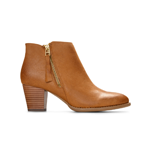Five Steps Toward Better Flexibility for Your New Year
By Brian Hoke, DPT, SCS
As we look forward to a New Year, our thoughts often turn to how we can better our health and fitness. One of the keys to maintaining a healthy lifestyle is the inclusion of regular stretching for major muscle groups of our legs. Some of the most common muscle groups that become too tight without preventive maintenance are the hip flexors, iliotibial band and outer hip muscles, hamstrings in the back of the thigh, and the muscles in the back of our calf.
The hip flexors are strong muscles deep in the front of the hip joint that provide much of the power when we swing our leg forward in walking and running. Unfortunately, when we sit for long periods, the hip flexors are kept in a shortened position. Too much tightness in this group can result in hip and back pain and hinder our performance when we are trying to run efficiently. So, how can you increase foot flexibility? Here are a few flexibility exercises we can recommend:
To stretch this muscle, put your right foot or left foot on a chair and bend the knee to allow your body forward, keeping a good upright spine posture. The hip flexor of the leg on the floor gets a nice calf stretch as we lean forward. Hold the calf stretch at your comfortable limit for 15 seconds and repeat this 5 times.

The outer hip can also become tight and lead to tenderness in this area. To stretch these muscles, we will stand next to a chair to help maintain our balance during the stretch. We begin by crossing over the leg we want to stretch. We can then slowly lean our trunk toward the chair and away from the side, we want to stretch. We should feel a gentle pull in the outer hip area. Hold the stretch for 15 seconds and repeat it 5 times.

Another common problem area is the iliotibial band (IT Band). This long flat tissue covers the outside of our thigh from our hip all the way to our knee. When we run, our foot lands much closer to the center of our body, so this muscle needs to be even more flexible to avoid hip and knee trouble. To stretch the IT band , stand next to a chair with most of your weight on the leg closest to the chair. Bend your knee slightly and hold this position as you glide your hip toward the chair. Don’t worry that you don’t feel as much of a stretch since this tissue has less of the muscle fibers that sense stretch. Hold the stretch position for 15 seconds and do this 5 times.

The calf muscles in each thigh’s back are called the hamstring group. These provide power and stability for our knee joints, and they can also influence our lower back. If they become tight, we put more stress on the small muscles in our lower back when we bend forward. Like the hip flexors, these muscles are also in a shortened position when we sit for extended periods of time. To safely stretch the hamstrings, put your foot on a chair and bend forward until you feel the pull in the back of your thigh. Try to focus on bending at your hip without rounding your back. Hold the stretch for 15 seconds and repeat this 5 times.

The powerful calf muscles in the back of our lower leg are very important in walking and running. They can easily overpower the muscles in the front of the leg and contribute to shin splints. Tightness in this group can also cause stress to the arches in our feet, leading to the familiar ‘first step in the morning” pain of plantar fasciitis. To stretch the calf, hold the back of a chair and put one foot forward. Lean your body forward with a good upright spine posture until you feel a stretch in the back of the leg. It helps to do this stretch with a shoe or sandal designed to support the arch, such as Vionic . Hold the stretch for 15 seconds and repeat it 5 times.

It is important to approach the stretches gradually and hold each stretch at the point where you begin to feel the pulling sensation. Don’t try to force a stretch if it is uncomfortable. Committing a few minutes a day to stretching can go a long way toward a healthy New Year. And in the spirit of the holidays, consider purchasing new orthotic shoes for yourself or your loved ones, such as orthopedic sandals for men , over pronation shoes , or orthotic boots .
(Photos courtesy of Melissa Charlwood, DPT, GCS)
About the Author:
Specializing in orthopedic and sports physical therapy, Brian Hoke, DPT, SCS, has a particular interest in the biomechanical factors influencing lower limb rehabilitation. He is the owner of Atlantic Physical Therapy, a private practice in Virginia Beach, VA.
Brian is a board-certified Clinical Specialist in Sports Physical Therapy, a distinction achieved by fewer than 600 physical therapists in the U.S. He works with athletes of all levels—from recreational runners to elite professional and Olympic athletes. He has contributed chapters to two textbooks on the treatment of running injuries.
Brian is an avid educator, lecturing extensively in the U.S. and internationally. Since 1985, he has been a faculty member of the popular continuing medical education seminar, “When the Feet Hit the Ground, Everything Changes.” He co-developed and has taught the “Take the Next Step” course since 1990. In addition, he has been an adjunct faculty member of physical therapy programs at Old Dominion University and Touro College on Long Island, NY.
Brian’s expertise in sports physical therapy is a particular asset to Vionic ’s athletic line of footwear.









